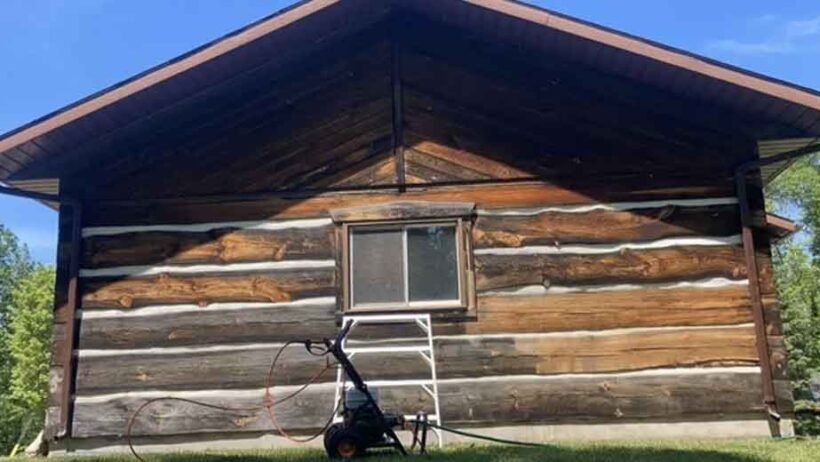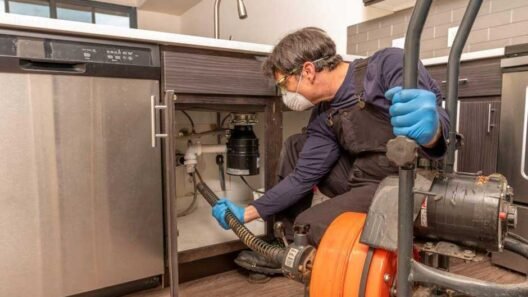You can work with a log cabin restoration contractor to preserve the strength, beauty, and historic character of your vintage home. Restorations involve using specific materials that match the existing structure. Contractors may find the same vintage caulking and chinking options or upgrade to modern alternatives. Here are a few tips to help you choose the right materials for your log home restoration:
Compatible Log Replacements
Restoring a log cabin often involves replacing damaged wood with the same species used in the original construction. Matching log species, such as pine, oak, or cedar, leads to consistent texture, color, and structural behavior. Different species may expand and contract at different rates, increasing the likelihood of cracks and gaps, which can lead to water intrusion. Log cabin restoration companies use seasoned or kiln-dried logs to prevent future shrinkage during dry seasons.
Green wood contains moisture and is more likely to warp as it dries, so restoration contractors avoid it. Even if the grain and knot patterns match, the wood will behave differently over time, increasing the need for repairs and adjustments. Contractors seek visually matching logs that blend seamlessly with the existing structure to achieve uniform restorations. You can ask them if they stock or know sources with similar logs from the same age range. These options may enhance compatibility and durability.
High-Quality Chinking Options
Chinking fills the gaps between logs, providing a flexible barrier against air and moisture. These seals naturally wear out, lose flexibility, and develop cracks over time. Old cabins may feature traditional, lime-based chinking and materials. Contractors can use the same materials or upgrade to modern synthetic alternatives. Synthetic chinking expands and contracts with the logs, reducing the likelihood of cracking. They’re also modern options designed to withstand dry or high-moisture environmental conditions.
Contractors utilize high-quality, UV-based sealants and weatherproof materials to create durable and reliable seals. They also reseal your cabin every few years to maintain insulation and prevent moisture buildup that may lead to mold and other biological growths. Ask the contractor about appropriate chinking and caulking materials that align with the cabin’s aging logs and construction.
Reliable Wood Treatments
Log cabins are vulnerable to various weather elements, including rain, snow, and extreme heat. They’re also susceptible to pest infestation. During restorations, contractors choose specific preservatives and treatments to protect the logs from insects, fungus, and decay. Borate-based treatments are the preferred option because they penetrate deep into the wood without altering its appearance. The treatment is effective against carpenter ants and termites, which are more likely to breed in old log structures. Oil-based preservatives can trap moisture and hinder breathability, so avoid them unless the logs are already treated. Contractors may test treatments and preservatives on small areas to check for potential discoloration and surface reactions. Look for high-quality treatments that provide high moisture protection if you live in a particularly rainy area.
Durable Restoration Hardware
When restoring a log cabin, the choice of hardware, such as nails, screws, and fasteners, plays a key role in achieving secure and long-lasting connections between logs. These components are typically selected for their strength and compatibility with the cabin’s structure and materials. Contractors often choose corrosion-resistant options, like stainless steel or galvanized hardware, to help maintain the appearance and stability of the cabin over time. They may also use brackets or plates designed to distribute weight and stress evenly. Before work begins, review the types of hardware your contractor plans to use to verify they’re consistent in quality and appropriate for the restoration project.
Matching Log Finishes
Log home restoration may involve using stained or coated logs to reduce the impact of sunlight, rain, and temperature fluctuations. The selected stains should be breathable, allowing moisture to escape while blocking UV rays. Select transparent finishes that accentuate the natural texture and grain of the logs. Contractors may recommend stains with features like:
- Water-repellent finishes for wet and humid climates
- Finishes resistant to freeze-thaw cycles for snowy regions
- Pest-resistant finishes for areas with increased insect populations
Speak to a Log Cabin Restoration Contractor Today
Log cabins require regular maintenance and occasional repairs. If your cabin has lasted for decades, it may require a more comprehensive restoration that involves replacing multiple sections. Contact a reliable contractor today to get started with professional log cabin restoration.








